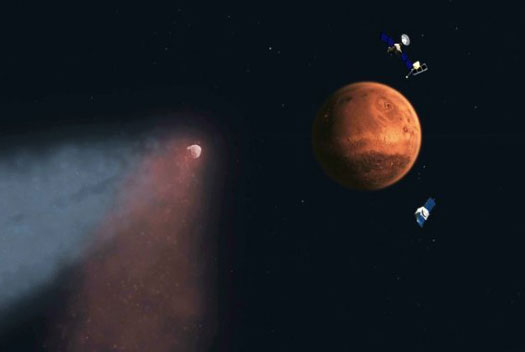 Two NASA and one European spacecraft have gathered new information about the basic properties of a wayward comet that buzzed by Mars Oct. 19, directly detecting its effects on the Martian atmosphere.
Two NASA and one European spacecraft have gathered new information about the basic properties of a wayward comet that buzzed by Mars Oct. 19, directly detecting its effects on the Martian atmosphere.
Nov 7th, 2014
Read more
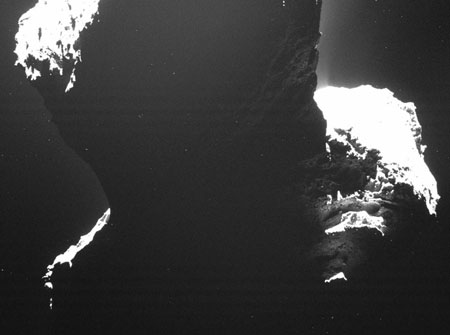 Light scattered from dust particles allows a first glance at the side of comet 67P that has been trapped in the darkness of polar night for the last months.
Light scattered from dust particles allows a first glance at the side of comet 67P that has been trapped in the darkness of polar night for the last months.
Nov 7th, 2014
Read more
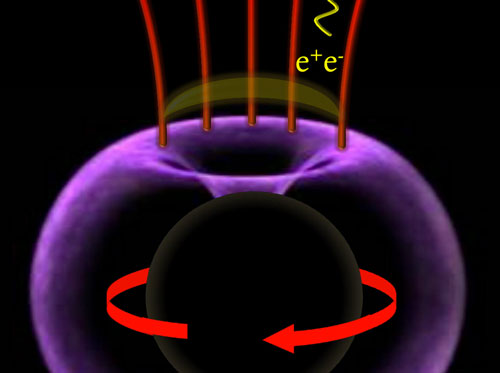 MAGIC telescopes observe an extremely short, powerful outburst of radiation in Galaxy IC 310.
MAGIC telescopes observe an extremely short, powerful outburst of radiation in Galaxy IC 310.
Nov 7th, 2014
Read more
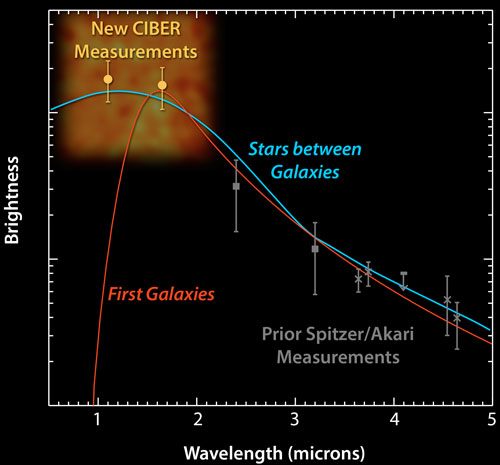 A sounding rocket experiment has detected a surprising surplus of infrared light in the dark space between galaxies, a diffuse cosmic glow as bright as all known galaxies combined. The glow is thought to be from orphaned stars flung out of galaxies.
A sounding rocket experiment has detected a surprising surplus of infrared light in the dark space between galaxies, a diffuse cosmic glow as bright as all known galaxies combined. The glow is thought to be from orphaned stars flung out of galaxies.
Nov 7th, 2014
Read more
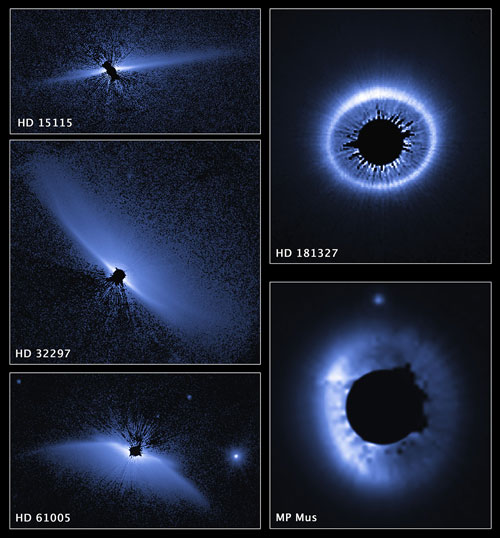 Astronomers using the Hubble Space Telescope have completed the largest and most sensitive visible-light imaging survey of dusty debris disks around other stars. These dusty disks, likely created by collisions between leftover objects from planet formation, were imaged around stars as young as 10 million years old and as mature as more than 1 billion years old.
Astronomers using the Hubble Space Telescope have completed the largest and most sensitive visible-light imaging survey of dusty debris disks around other stars. These dusty disks, likely created by collisions between leftover objects from planet formation, were imaged around stars as young as 10 million years old and as mature as more than 1 billion years old.
Nov 6th, 2014
Read more
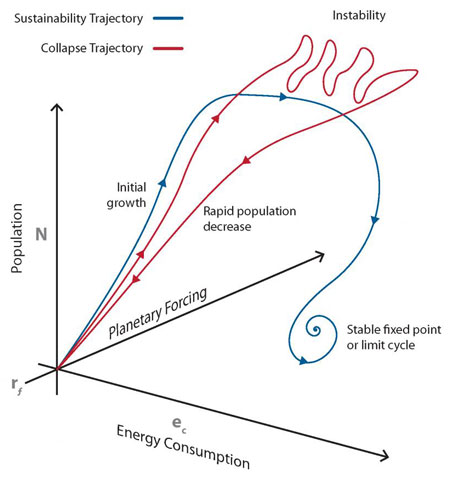 Two astrophysicists argue that questions about the future of life on Earth and beyond may soon be resolvable scientifically, thanks to new data about the Earth and about other planets in our galaxy, and by combining the earth-based science of sustainability with the space-oriented field of astrobiology.
Two astrophysicists argue that questions about the future of life on Earth and beyond may soon be resolvable scientifically, thanks to new data about the Earth and about other planets in our galaxy, and by combining the earth-based science of sustainability with the space-oriented field of astrobiology.
Nov 6th, 2014
Read more
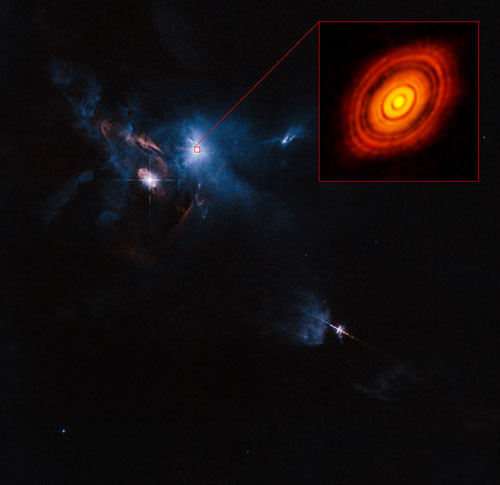 For ALMA's first observations in its new and most powerful mode, researchers pointed the antennas at HL Tauri - a young star, about 450 light-years away, which is surrounded by a dusty disc. The resulting image exceeds all expectations and reveals unexpectedly fine detail in the disc of material left over from star birth.
For ALMA's first observations in its new and most powerful mode, researchers pointed the antennas at HL Tauri - a young star, about 450 light-years away, which is surrounded by a dusty disc. The resulting image exceeds all expectations and reveals unexpectedly fine detail in the disc of material left over from star birth.
Nov 6th, 2014
Read more
Instead of WIMPS or axions, dark matter may be made of macroscopic objects as small as a few ounces up to the size of a good asteroid, and probably as dense as a neutron star or the nucleus of an atom.
Nov 4th, 2014
Read more
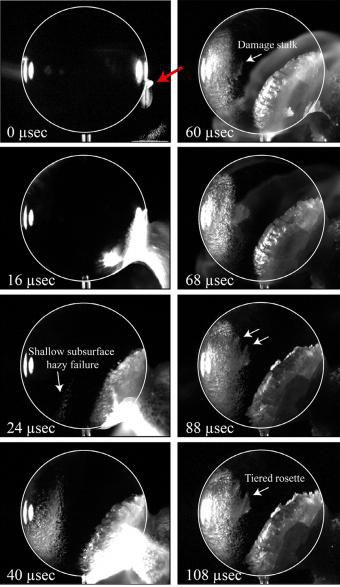 Collisions of heavenly bodies generate almost unimaginable levels of energy. Researchers at Brown University used NASA's ultra-high-speed cannon and computer models to simulate such a collision on Vesta, the second-largest object in the asteroid belt. Their analysis of the images - taken at a million frames per second - shows how Vesta may have gotten the deep grooves that encircle its midsection.
Collisions of heavenly bodies generate almost unimaginable levels of energy. Researchers at Brown University used NASA's ultra-high-speed cannon and computer models to simulate such a collision on Vesta, the second-largest object in the asteroid belt. Their analysis of the images - taken at a million frames per second - shows how Vesta may have gotten the deep grooves that encircle its midsection.
Nov 4th, 2014
Read more
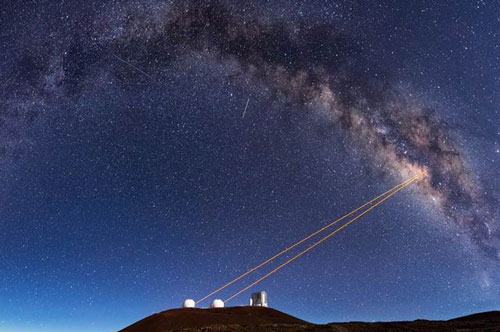 The mystery about a thin, bizarre object in the center of the Milky Way that some astronomers believe to be a hydrogen gas cloud headed toward our galaxy's enormous black hole has been solved by UCLA astronomers.
The mystery about a thin, bizarre object in the center of the Milky Way that some astronomers believe to be a hydrogen gas cloud headed toward our galaxy's enormous black hole has been solved by UCLA astronomers.
Nov 4th, 2014
Read more
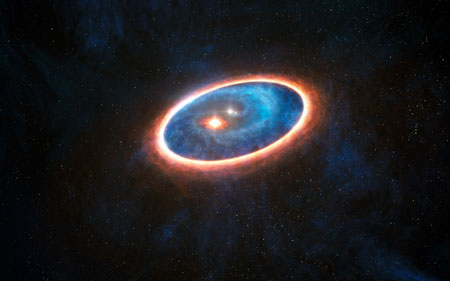 An international team of astronomers has carried out the most accurate study so far of the cocoon of gas and dust surrounding the GG Tau A system. By combining complementary observations at submillimeter (ALMA and IRAM) wavelengths with those at infrared (VLTI/ESO) wavelengths, the researchers were able to identify the complex dynamics at work in GG Tau.
An international team of astronomers has carried out the most accurate study so far of the cocoon of gas and dust surrounding the GG Tau A system. By combining complementary observations at submillimeter (ALMA and IRAM) wavelengths with those at infrared (VLTI/ESO) wavelengths, the researchers were able to identify the complex dynamics at work in GG Tau.
Nov 3rd, 2014
Read more
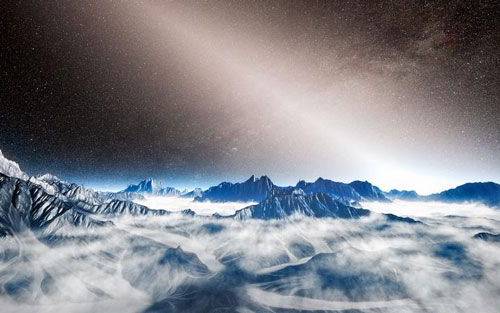 A team of astronomers observed 92 nearby stars to probe exozodiacal light from hot dust close to their habitable zones and combined the new data with earlier observations.
A team of astronomers observed 92 nearby stars to probe exozodiacal light from hot dust close to their habitable zones and combined the new data with earlier observations.
Nov 3rd, 2014
Read more
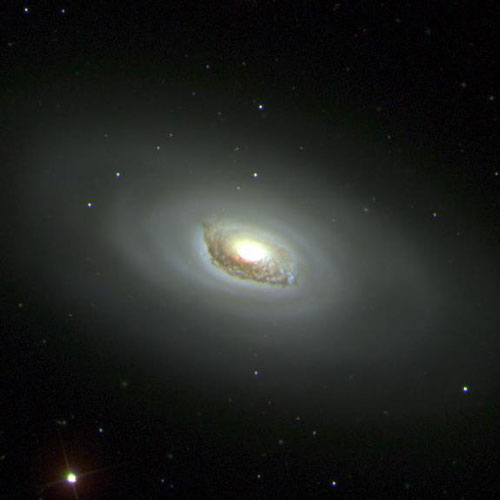 New research offers a novel insight into the nature of dark matter and dark energy and what the future of our Universe might be.
New research offers a novel insight into the nature of dark matter and dark energy and what the future of our Universe might be.
Oct 31st, 2014
Read more
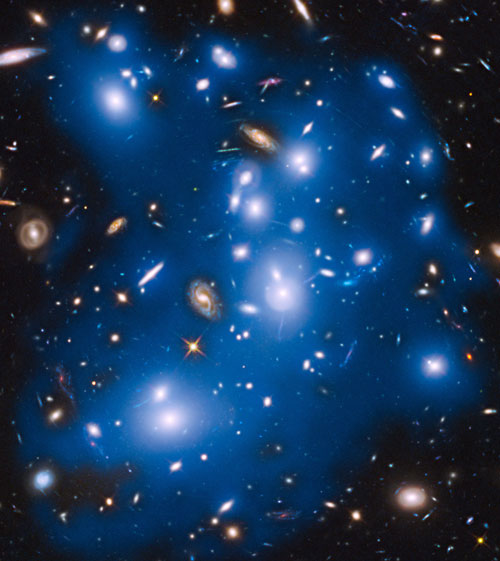 The Hubble Space Telescope has picked up the faint, ghostly glow of stars ejected from ancient galaxies that were gravitationally ripped apart several billion years ago. The mayhem happened 4 billion light-years away, inside an immense collection of nearly 500 galaxies nicknamed 'Pandora's Cluster', also known as Abell 2744
The Hubble Space Telescope has picked up the faint, ghostly glow of stars ejected from ancient galaxies that were gravitationally ripped apart several billion years ago. The mayhem happened 4 billion light-years away, inside an immense collection of nearly 500 galaxies nicknamed 'Pandora's Cluster', also known as Abell 2744
Oct 31st, 2014
Read more
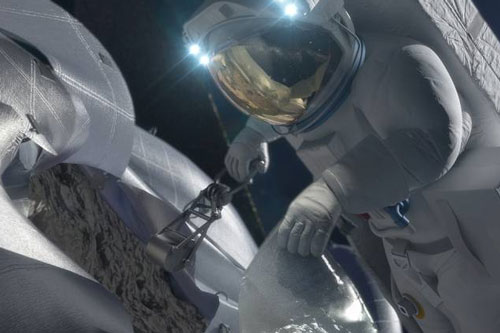 Better options available in thousands of near-Earth asteroids, expert says.
Better options available in thousands of near-Earth asteroids, expert says.
Oct 31st, 2014
Read more
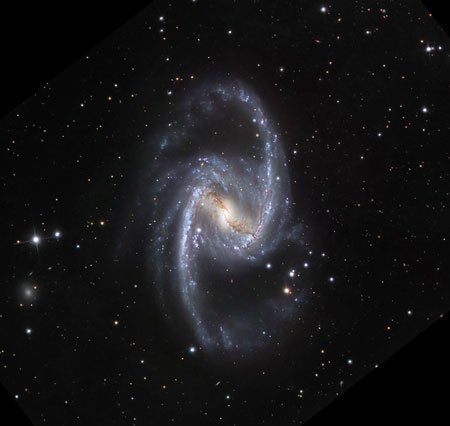 Astronomers have long sought to understand exactly how the universe evolved from its earliest history to the cosmos we see around us in the present day. In particular, the way that galaxies form and develop is still a matter for debate. Now a group of researchers have used the collective efforts of the hundreds of thousands of people that volunteer for the Galaxy Zoo project to shed some light on this problem.
Astronomers have long sought to understand exactly how the universe evolved from its earliest history to the cosmos we see around us in the present day. In particular, the way that galaxies form and develop is still a matter for debate. Now a group of researchers have used the collective efforts of the hundreds of thousands of people that volunteer for the Galaxy Zoo project to shed some light on this problem.
Oct 30th, 2014
Read more
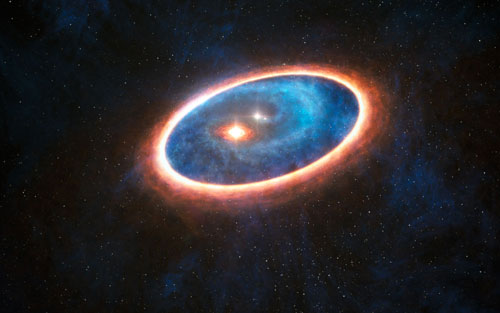 Astronomers have detected a streamer of dust and gas flowing from a massive outer disk toward the inner reaches of a binary star system. This never-before-seen feature may be responsible for sustaining a second, smaller disk of planet-forming material that otherwise would have disappeared long ago.
Astronomers have detected a streamer of dust and gas flowing from a massive outer disk toward the inner reaches of a binary star system. This never-before-seen feature may be responsible for sustaining a second, smaller disk of planet-forming material that otherwise would have disappeared long ago.
Oct 29th, 2014
Read more
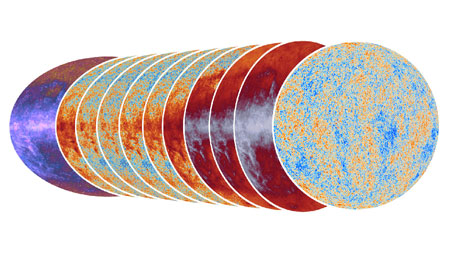 Astronomy and Astrophysics is publishing a special feature of 31 articles describing the data gathered by Planck over 15 months of observations and released by ESA and the Planck Collaboration in March 2013. This series of papers presents the initial scientific results extracted from this first Planck dataset.
Astronomy and Astrophysics is publishing a special feature of 31 articles describing the data gathered by Planck over 15 months of observations and released by ESA and the Planck Collaboration in March 2013. This series of papers presents the initial scientific results extracted from this first Planck dataset.
Oct 29th, 2014
Read more
 Two NASA and one European spacecraft have gathered new information about the basic properties of a wayward comet that buzzed by Mars Oct. 19, directly detecting its effects on the Martian atmosphere.
Two NASA and one European spacecraft have gathered new information about the basic properties of a wayward comet that buzzed by Mars Oct. 19, directly detecting its effects on the Martian atmosphere.
 Subscribe to our Space Exploration News feed
Subscribe to our Space Exploration News feed














